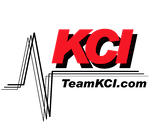Benefits of Third-Party Maintenance Services for Your Business
Third-party maintenance services have become an integral part of managing IT infrastructure for many organizations. These services involve outsourcing the responsibility of maintaining and servicing equipment to a specialized provider, rather than relying solely on manufacturers or in-house teams. In this article, we will explore the impact that third-party maintenance services can have on an organization’s IT infrastructure.
One of the key impacts of third-party maintenance services on IT infrastructure is cost savings. Manufacturers’ maintenance contracts and extended warranties can often be expensive, especially for organizations with a substantial amount of equipment. Third-party maintenance providers typically offer more cost-effective options that can provide similar services and support levels as the original equipment manufacturers (OEMs) at a fraction of the cost. This allows organizations to allocate their budget to other critical areas of the business, such as innovation and growth, while still receiving reliable maintenance and support for their IT infrastructure.
Another significant impact of third-party maintenance services is their ability to extend the lifecycle of IT equipment. Manufacturers often have predetermined end-of-life or end-of-support dates for their products, after which they may no longer provide updates, patches, or technical support. This can present a challenge for organizations that rely on older or legacy systems. Third-party maintenance providers can step in and continue to provide support beyond these dates, allowing organizations to maximize the lifespan of their IT infrastructure. By extending the lifecycle of equipment, organizations can delay the costly process of replacing or upgrading systems, resulting in substantial cost savings over time.
Furthermore, third-party maintenance services can offer organizations a higher level of flexibility and customization. Unlike manufacturers who may have rigid service offerings, third-party providers can tailor their services to meet the specific needs of an organization. This can include adjusting the level of support, response times, and service coverage to align with an organization’s unique requirements. The flexibility allows organizations to choose the services that best suit their IT infrastructure while avoiding unnecessary expenses for services they don’t need. Additionally, third-party providers often have extensive expertise in a wide range of OEM equipment, allowing them to support diverse IT infrastructures without limitations.
Additionally, the impact of third-party maintenance services can be seen in improved uptime and reduced downtime. Quick and efficient resolution of technical issues is crucial for organizations to minimize any disruption to their operations. Third-party providers typically have established service level agreements that ensure rapid response times and prioritized support. Their specialized technicians are well-equipped to diagnose and mitigate issues promptly, providing organizations with peace of mind and the ability to maintain high levels of productivity. By reducing downtime, third-party maintenance services significantly impact an organization’s ability to operate smoothly and meet customer demands.
Lastly, engaging third-party maintenance services can also free up internal resources. By outsourcing the responsibility of equipment maintenance to specialized providers, organizations can reallocate their in-house teams to focus on more strategic and value-added activities. This can include projects that drive innovation, enhance customer experiences, and improve overall business performance. With the burden of day-to-day maintenance lifted off their shoulders, IT teams can contribute more effectively to an organization’s growth and strategic objectives.
In conclusion, third-party maintenance services can have a profound impact on an organization’s IT infrastructure. From cost savings and extended lifecycle of equipment to increased flexibility, improved uptime, and utilization of internal resources, the benefits are numerous. Organizations should carefully evaluate their specific needs and consider engaging third-party providers to optimize their IT infrastructure management. The expertise, affordability, and customized support offered by these services can enhance the overall performance and efficiency of an organization’s IT operations.

